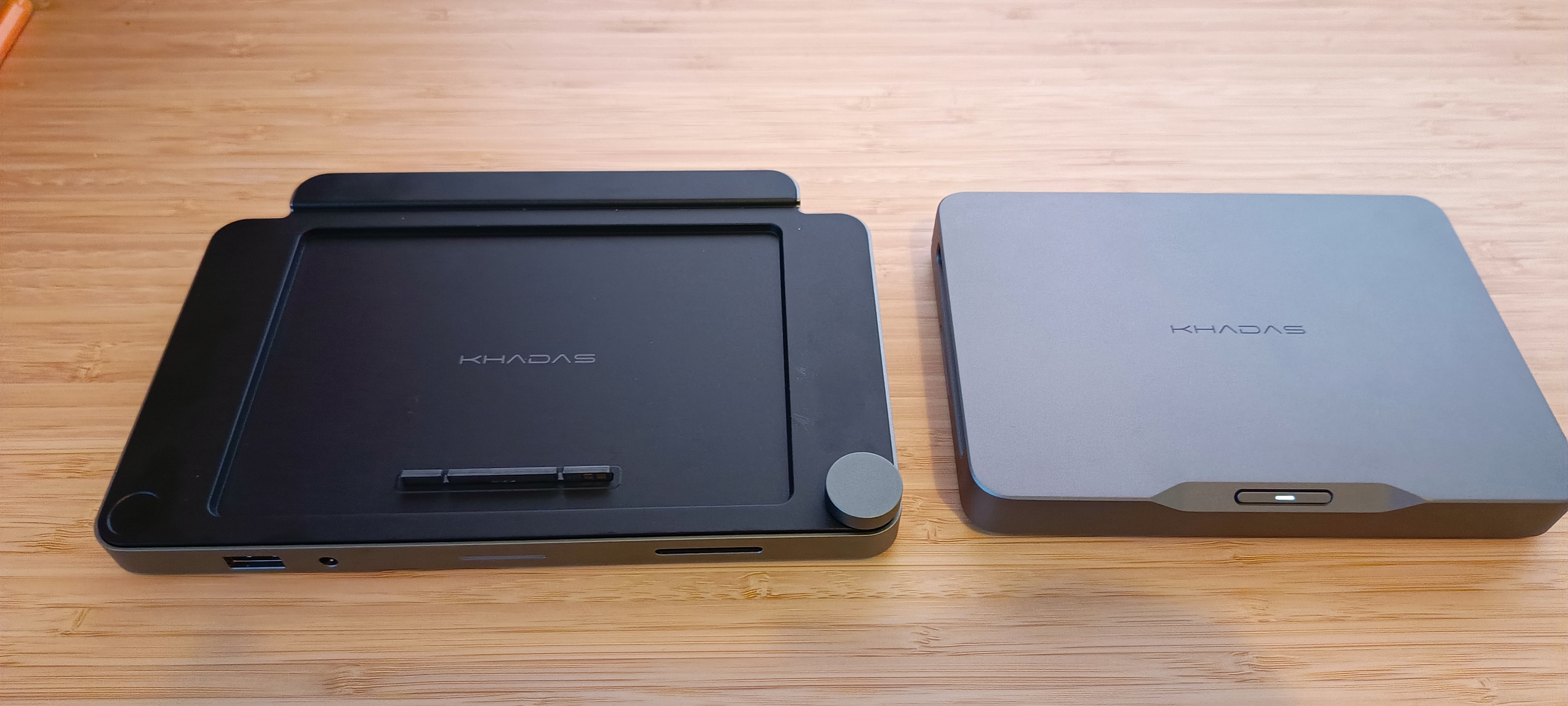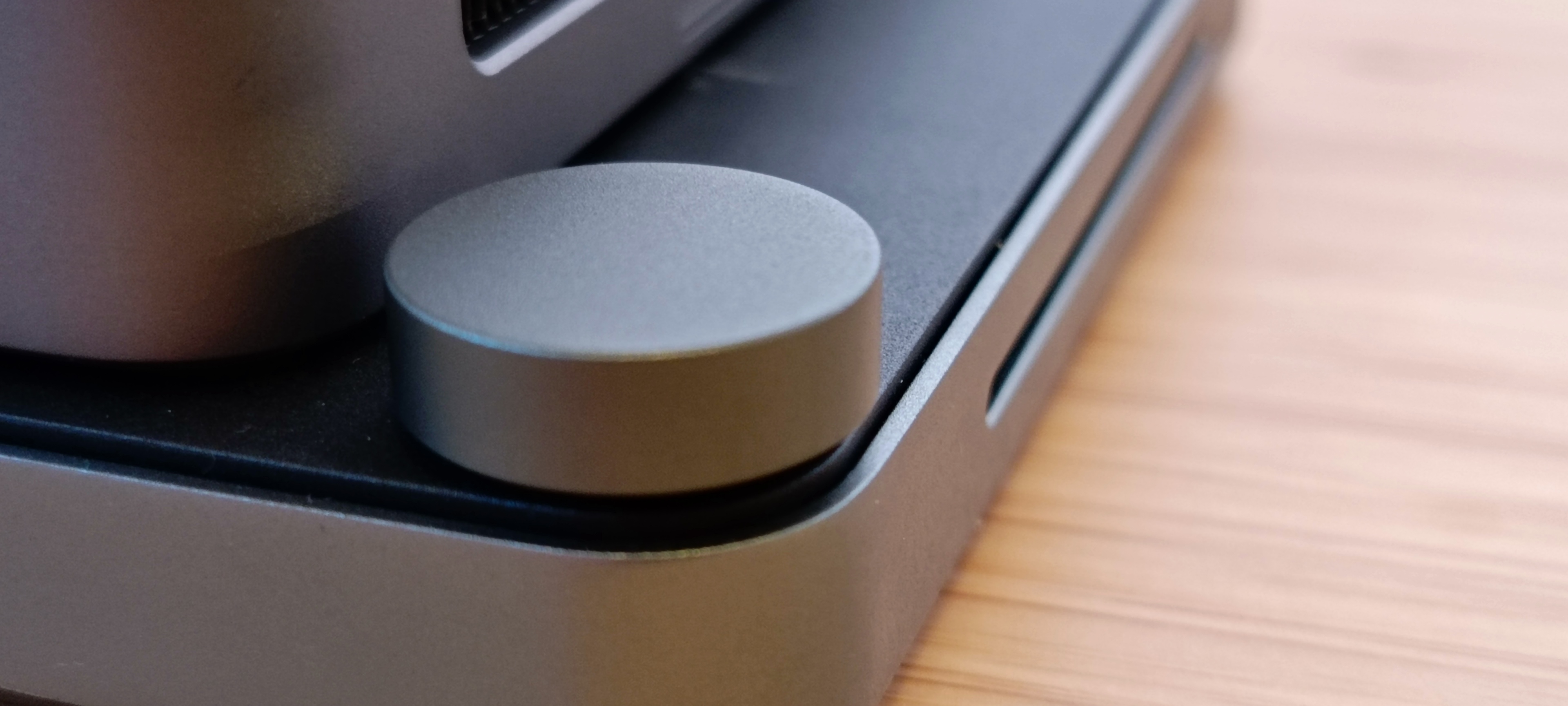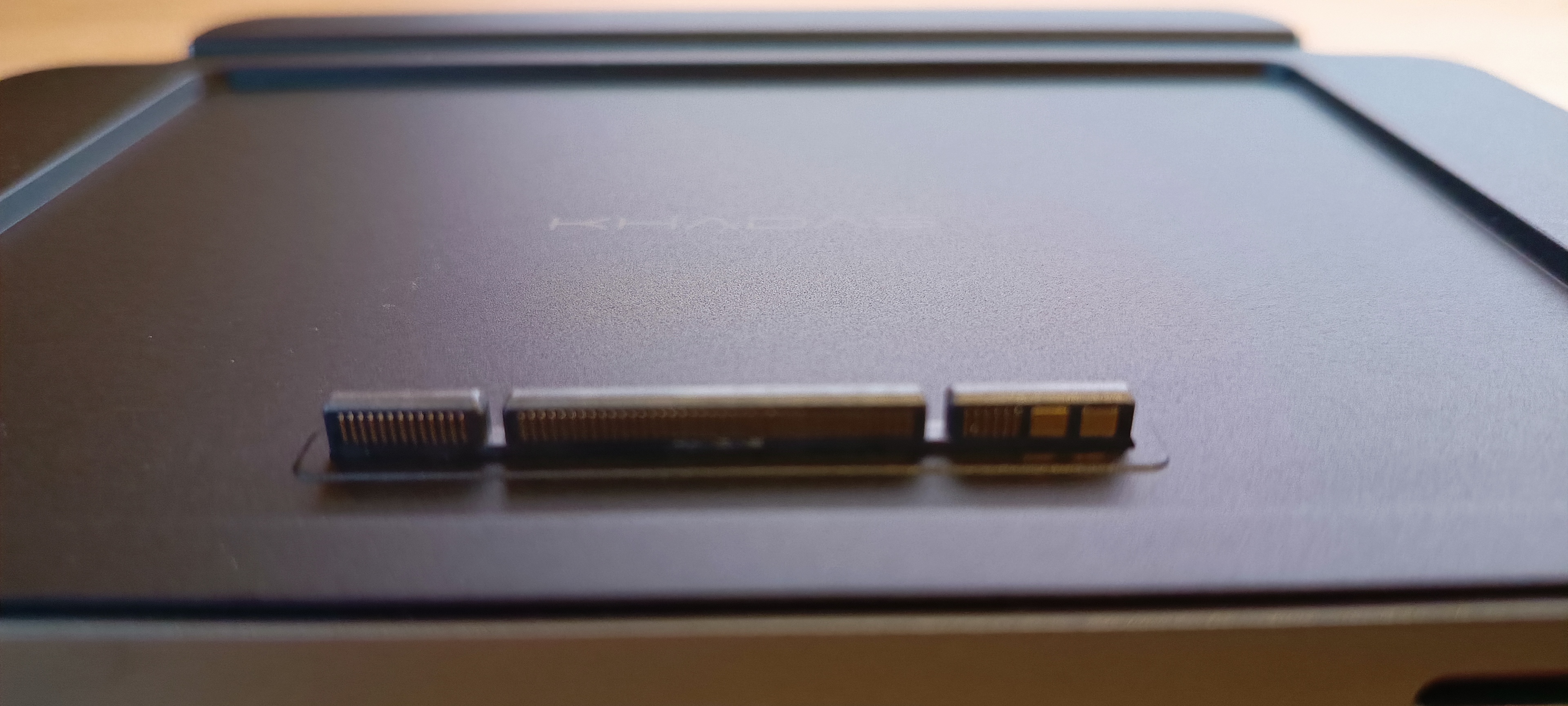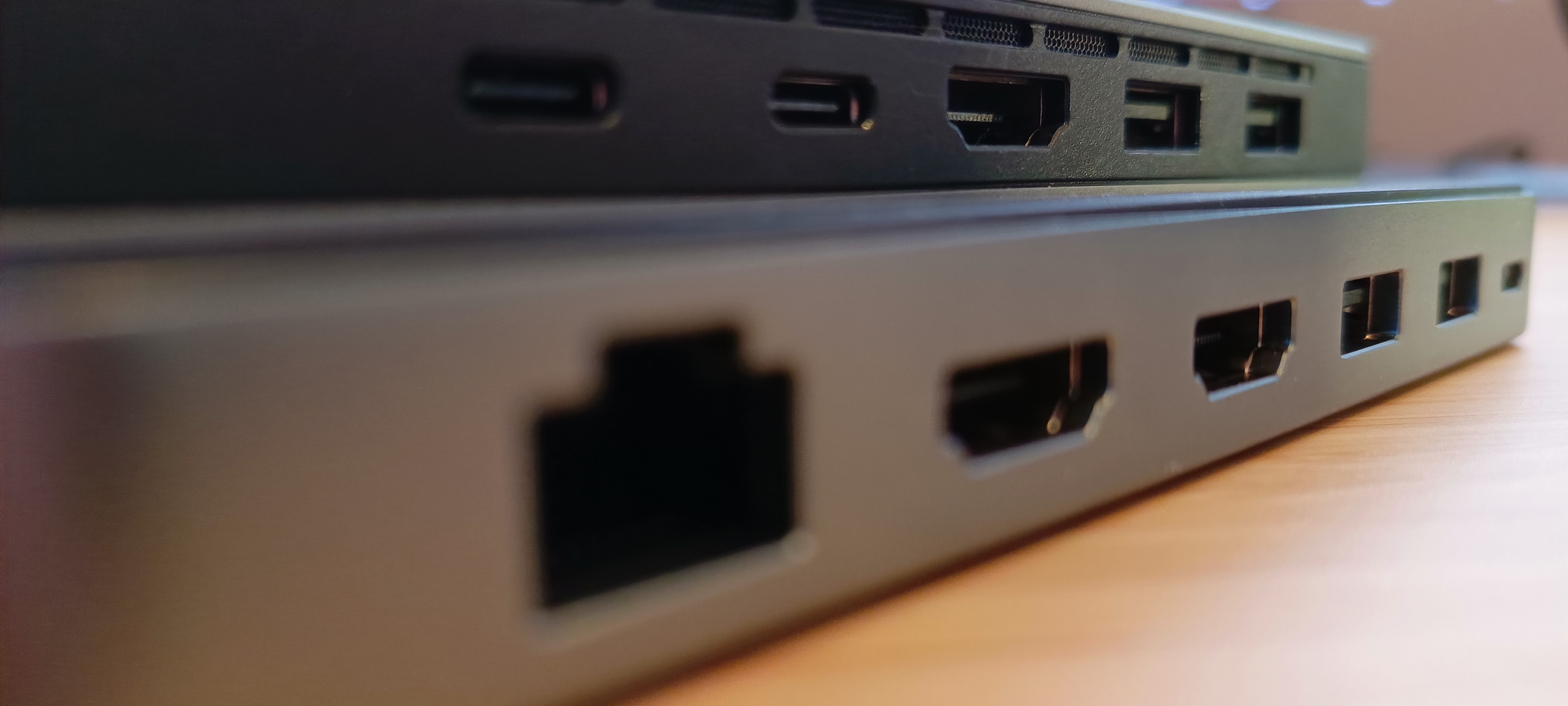
When I got the Khadas Mind mini-PC in for testing, I really couldn't believe how small the box containing it was. Literally the size of a box you receive a smartphone in, accompanied by a second box the size of one you get a small tablet in. And that's it.
Partly funded through crowdfunding, the Khadas Mind wants to be more than just small, though. It wants to be small and mighty, with some hard-to-believe spec figures aiming to back up that claim. So I received a unit for testing over several weeks, to live with and work on to put it through its paces in a real-world scenario, to see whether this could come anywhere close to the best small form factor computers out there, the most famous of which is probably the Mac mini, and maybe prove itself as a viable option for graphic designers or programmers tight on space (and maybe those tight on money as well, as it retails from only $799)...
And after a few weeks of use, I can confidently say I'd happily use the Khadas Mind as my daily computer for anything outside the heaviest or most graphically intensive work. You can even play some games on it! Who'd have thought.

Khadas Mind review: Key specifications
Khadas Mind review: Design and build

The Khadas Mind is tiny. I don't just mean small, like a mini-PC small, but tiny. With dimensions of about 18.5 x 12 x 3cm when you've put the Mind unit and the Mind Dock together. That's so small that you could fit the entire construction inside a Mac mini. The desk footprint is only slightly smaller than my smartphone, and covers just over a quarter of an A4 page. It's truly astonishing how teeny this thing is.
It's also very light, at only about 450 grams for the Mind unit itself, but feels solid, sturdy and well-built from all angles. There is an impressive array of ports on offer, especially when combined with the Mind Dock (which is an optional extra sold for $179). On the back of the Mind unit are an HDMI port, two USB-C ports and two USB-A ports. Both USB-C ports support DP output at 32Gbps and PD charging. And when the Mind Dock is added, you have an additional 9 ports in total, including 2 HDMI, 3 USB-A ports, a USB-C port, Ethernet port, an audio jack and SD card reader. It's also connected quite inventively to the main unit, via the 'Mind Link', where you slot the main unit on top of the Dock, connecting up the two seamlessly. There's even Bluetooth!
There's also a volume knob on the Dock, which is fitted with speakers, and there's a fingerprint scanner too, which offers an additional level of security, as you can set the pre-installed Windows OS inside up to only unlock or give you access to secure features like passwords by using your fingerprint.
The whole thing is both neat, tidy and dare I say it for a grey brick, a little bit attractive.
Khadas Mind review: Features

We've gone through the extensive connectivity of the Khadas Mind above, as well as the Dock including a speaker and fingerprint scanner. One of the more interesting features of the Khadas Mind is the stand-by battery, though. As it's only a small 5.55Wh battery, it's not powerful enough to run the computer off of battery power, but what it does is it keeps the computer on stand-by mode if you disconnect the power cable or are changing between usage modes. So if you're working in one location and need to move to another one, you simply disconnect the computer, stick it in your pocket (yeah, it really fits, I tried) and then connect it again at the new location and it starts up automatically and carries on as if nothing had happened.
It's a real convenience feature if you need to grab the computer to present at a meeting, show a colleague something you're working on or take the computer with you from a home office to an, er, office office (or vice versa).
Of course, there's no monitor included, as is the custom for mini-PCs.
But the real feature here is the rather astonishing performance Khadas has packed into this dinky little box.
Khadas Mind review: Performance

With such a teeny tiny mini PC, I expected some serious concessions when it came to the power offered once it's all set up and switched on. I'm happy to report I was very, very wrong.
The Khadas Mind currently comes in two configurations. The Standard is packed with a 512GB SSD, 16GB RAM and a 2GHz Intel Core i5-1340P processor, while the Premium version, which is the one I tested, somehow fits a 1TB SSD, 32GB RAM and a more powerful 2.2GHz Intel Core i7-1360P processor.
It won't surprise you to know the Khadas Mind only has integrated Intel Iris Xe graphics, though, but a Mind Graphics extension is in development, which houses an NVIDIA GeForce RTX 4060Ti graphics card to turn it into a proper gaming and graphics-processing monster too.
Benchmark testing yielded some impressive results too, with Geekbench 6 results rivalling Mac's M2 Pro processor with its CPU figures, while Cinebench 2024 results outperformed Apple's M1 processor and weren't that far below the M1 Max scores available to me. Oh, and it absolutely rinses other mini PCs that either I or any of my experts on Creative Bloq have tested over the last year.
With integrated graphics only, GPU scores are lower, though, and I felt any intensive 3D testing or rendering tasks were redundant in this case.
What I did, however, was run Photoshop and some other processor-intensive software simultaneously, and I noticed no lag or hiccups at all, which makes this a real Mac mini rival in my eyes, especially this more powerful spec.
And I even installed and ran a few games, just to see how well the high RAM could compensate for the lack of discrete graphics. While AAA games are a no-go here, I could run several less demanding games, including strategy games like Civilization, and arcade games like Hot Wheels Unleashed (not on Ultra graphic settings, to be fair) and squeeze over 30fps out of this mighty little box.
With the Mind Graphics extension, I'm in absolutely no doubt that the Mind could handle pretty much any game thrown at it.
The speakers on the Dock have very decent volume to them, but are unsurprisingly lacking in depth or range. However, they're more than serviceable for video-conferencing (you'll need an external webcam for the video part of that though) and listening to music/radio while working.
Khadas Mind review: Price
Currently only on sale in the USA, the Khadas Mind in Standard spec sets you back $799, while the Premium costs $1,099. The Mind Dock is an additional option, and costs $179. Mind Graphics is still in development and no price has been confirmed for that.
Should I buy the Khadas Mind?

Windows users haven't really had a go-to mini-PC to really embrace as a capable alternative to the Mac mini (let alone the bigger Mac Studio), but the Khadas Mind is the first one I've tested that could genuinely change that.
I've loved using it, and despite its slight graphical compromise, I would happily use this as my work computer every day. It handles photo-editing with ease, connectivity is ample and comfortable, it's exceedingly easy to set up, and with the Mind Dock attached, it's truly a complete workstation that takes up an astonishingly small amount of desk space.
The price point is very fair considering the RAM and storage space you get, and everything about the build oozes a reassuring air of class and competence. Yeah, the Dock speakers aren't fantastic, and integrated graphics limit its 3D-working and gaming potential, but those are minor quibbles about an otherwise revelatory product.







